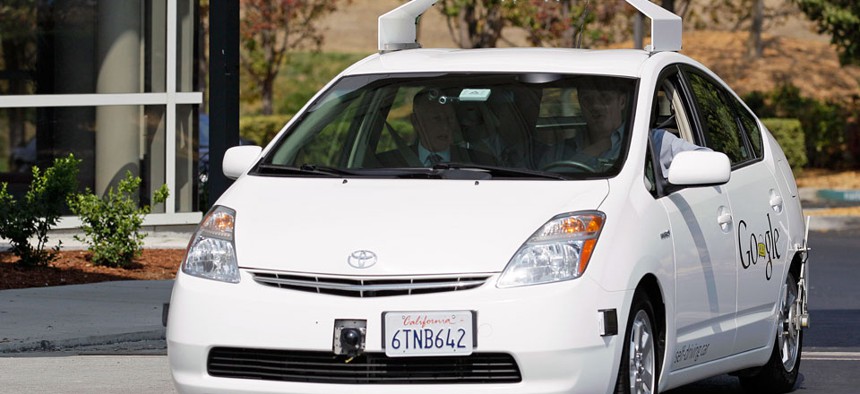How Driverless Cars Could Save the Government Lots and Lots of Money

California Gov. Edmund G Brown Jr., front left, riding in a driverless car in Mountain View, Calif. Eric Risberg/AP File Photo
In an autonomous world, many long-delayed improvements will be rendered obsolete.
Most of us experience the inefficiencies of America's transportation system every day. Congestion costs us time, poor roads cost us car repair fees, unrealized safety improvements cause hardship, injury and even death. Brookings economist Clifford Winston recently put a number on these inefficiencies — at least $100 billion — and assigned much of the blame to bad government.
What makes the situation so frustrating to Winston and others is that the government (at all levels) has options that could address some of these problems. Proper road pricing could decrease traffic, not to mention generate transportation revenue. Better pavement design could reduce maintenance costs and vehicle damage. Stronger traffic control systems could improve safety on the road.
Limited funding explains some of this inaction. But in a new paper, Winston and Purdue scholar Fred Mannering suggest there's more to it than that. They argue that transportation officials suffer from a bias toward the status quo that doesn't afflict the private sector. Case in point: most of the advances made toward driverless cars have come from the likes of Google and car manufacturers.
For that reason, write Winston and Mannering, if the government waits long enough it won't need to act at all on many of these problems — especially traffic and safety — because driverless cars will go a long way toward resolving them:
Thus driverless car technologies are quite likely to effectively leapfrog most of the existing technologies that the public sector could but has failed to implement to improve highway travel.
Read more at The Atlantic Cities.
NEXT STORY: Coming Soon: Free Internet From Space


